Recent Advances in Multimodal Nanostructured Bioaerogels for Smart Drug Delivery
Abstract
1. Introduction
2. Biocompatibility and Non-Cytotoxicity of Nanostructured Bioaerogels
3. Incorporation of Nanomaterials into Bioaerogels
4. Sensing and Controlled Release Mechanisms
4.1. pH-Responsive Release
4.2. Temperature-Responsive Release
4.3. Enzyme-Responsive Release
4.4. Other Responsive Release
5. Targeting Strategies: Active vs. Passive Targeting
6. Challenges and Limitations of Nanostructured Bioaerogels in Smart Drug Delivery
7. Conclusions and Future Perspectives
Author Contributions
Funding
Institutional Review Board Statement
Data Availability Statement
Acknowledgments
Conflicts of Interest
References
- Page, S.; Khan, T.; Kühl, P.; Schwach, G.; Storch, K.; Chokshi, H. Patient centricity driving formulation innovation: Improvements in patient care facilitated by novel therapeutics and drug delivery technologies. Annu. Rev. Pharmacol. Toxicol. 2022, 62, 341–363. [Google Scholar] [CrossRef] [PubMed]
- Pei, J.; Yan, Y.; Palanisamy, C.P.; Jayaraman, S.; Natarajan, P.M.; Umapathy, V.R.; Gopathy, S.; Roy, J.R.; Sadagopan, J.C.; Thalamati, D. Materials-based drug delivery approaches: Recent advances and future perspectives. Green Process. Synth. 2024, 13, 20230094. [Google Scholar] [CrossRef]
- Waheed, S.; Li, Z.; Zhang, F.; Chiarini, A.; Armato, U.; Wu, J. Engineering nano-drug biointerface to overcome biological barriers toward precision drug delivery. J. Nanobiotechnol. 2022, 20, 395. [Google Scholar] [CrossRef] [PubMed]
- Khan, M.I.; Hossain, M.I.; Hossain, M.K.; Rubel, M.; Hossain, K.; Mahfuz, A.; Anik, M.I. Recent progress in nanostructured smart drug delivery systems for cancer therapy: A review. ACS Appl. Bio Mater. 2022, 5, 971–1012. [Google Scholar] [CrossRef]
- Abdul Khalil, H.; Yahya, E.B.; Tajarudin, H.A.; Balakrishnan, V.; Nasution, H. Insights into the role of biopolymer-based xerogels in biomedical applications. Gels 2022, 8, 334. [Google Scholar] [CrossRef]
- Altinbasak, I.; Alp, Y.; Sanyal, R.; Sanyal, A. Theranostic nanogels: Multifunctional agents for simultaneous therapeutic delivery and diagnostic imaging. Nanoscale 2024, 16, 14033–14056. [Google Scholar] [CrossRef]
- Lim, Y.Y.; Zaidi, A.M.A.; Miskon, A. Composing on-program triggers and on-demand stimuli into biosensor drug carriers in drug delivery systems for programmable arthritis therapy. Pharmaceuticals 2022, 15, 1330. [Google Scholar] [CrossRef]
- Reshmi, R.; Jiju, K.; Suma, S.; Anoop, S.N. Folic acid grafted aminated zeolitic imidazolate framework (ZIF-8) as pH responsive drug carrier for targeted delivery of curcumin. J. Drug Deliv. Sci. Technol. 2023, 79, 104098. [Google Scholar] [CrossRef]
- Yang, X.; Zhang, C.; Deng, D.; Gu, Y.; Wang, H.; Zhong, Q. Multiple stimuli-responsive MXene-based hydrogel as intelligent drug delivery carriers for deep chronic wound healing. Small 2022, 18, 2104368. [Google Scholar] [CrossRef]
- Osman, N.; Devnarain, N.; Omolo, C.A.; Fasiku, V.; Jaglal, Y.; Govender, T. Surface modification of nano-drug delivery systems for enhancing antibiotic delivery and activity. Wiley Interdiscip. Rev. Nanomed. Nanobiotechnol. 2022, 14, e1758. [Google Scholar] [CrossRef]
- Chen, Y.; Shui, M.; Yuan, Q.; Vong, C.T.; Yang, Z.; Chen, Z.; Wang, S. Wielding the double-edged sword: Redox drug delivery systems for inflammatory bowel disease. J. Control. Release 2023, 358, 510–540. [Google Scholar] [CrossRef] [PubMed]
- Khalil, H.A.; Yahya, E.B.; Jummaat, F.; Adnan, A.; Olaiya, N.; Rizal, S.; Abdullah, C.; Pasquini, D.; Thomas, S. Biopolymers based aerogels: A review on revolutionary solutions for smart therapeutics delivery. Prog. Mater. Sci. 2023, 131, 101014. [Google Scholar] [CrossRef]
- Li, H.-Y.; Makatsoris, C.; Forbes, B. Particulate bioaerogels for respiratory drug delivery. J. Control. Release 2024, 370, 195–209. [Google Scholar] [CrossRef] [PubMed]
- Guastaferro, M.; Reverchon, E.; Baldino, L. Agarose, alginate and chitosan nanostructured aerogels for pharmaceutical applications: A short review. Front. Bioeng. Biotechnol. 2021, 9, 688477. [Google Scholar] [CrossRef]
- Saleh, W.M.; Yahya, E.B.; Ahmad, M.I.; Khalil, H.A. Exploring the properties of gelatin/chitosan bioaerogel scaffolds: Toward ultra–light and highly porous materials. Polym. Eng. Sci. 2024, 64, 3993–4001. [Google Scholar] [CrossRef]
- Khalil, H.A.; Yahya, E.B.; Tajarudin, H.A.; Surya, I.; Muhammad, S.; Fazita, M.N. Enhancing the properties of industrial waste nanocellulose bioaerogels using turmeric nano particles. Ind. Crops Prod. 2023, 197, 116500. [Google Scholar] [CrossRef]
- Velu, R.; Jayashankar, D.K.; Subburaj, K. Additive processing of biopolymers for medical applications. In Additive Manufacturing; Elsevier: Amsterdam, The Netherlands, 2021; pp. 635–659. [Google Scholar]
- Mahmood, A.; Patel, D.; Hickson, B.; DesRochers, J.; Hu, X. Recent progress in biopolymer-based hydrogel materials for biomedical applications. Int. J. Mol. Sci. 2022, 23, 1415. [Google Scholar] [CrossRef]
- Jummaat, F.; Yahya, E.B.; Khalil HPS, A.; Adnan, A.; Alqadhi, A.M.; Abdullah, C.; AK, A.S.; Olaiya, N.; Abdat, M. The role of biopolymer-based materials in obstetrics and gynecology applications: A review. Polymers 2021, 13, 633. [Google Scholar] [CrossRef]
- Goswami, M.; Rekhi, P.; Debnath, M.; Ramakrishna, S. Microbial polyhydroxyalkanoates granules: An approach targeting biopolymer for medical applications and developing bone scaffolds. Molecules 2021, 26, 860. [Google Scholar] [CrossRef]
- Lim, H.; Kim, J.Y.; Yoon, M.G.; Kang, Y.-M.; Park, Y.M.; Lee, H.-N.; Moon, S.-H.; Koh, W.-G.; Kim, H.-J. Facile control of porous structure of graphene aerogel via two-step drying process and its effect on drug release. J. Porous Mater. 2023, 30, 1725–1734. [Google Scholar] [CrossRef]
- García-González, C.A.; Sosnik, A.; Kalmár, J.; De Marco, I.; Erkey, C.; Concheiro, A.; Alvarez-Lorenzo, C. Aerogels in drug delivery: From design to application. J. Control. Release 2021, 332, 40–63. [Google Scholar] [CrossRef] [PubMed]
- Power, M.; Hosticka, B.; Black, E.; Daitch, C.; Norris, P. Aerogels as biosensors: Viral particle detection by bacteria immobilized on large pore aerogel. J. Non-Cryst. Solids 2001, 285, 303–308. [Google Scholar] [CrossRef]
- Alkhalidi, H.M.; Alahmadi, A.A.; Rizg, W.Y.; Yahya, E.B.; HPS, A.K.; Mushtaq, R.Y.; Badr, M.Y.; Safhi, A.Y.; Hosny, K.M. Revolutionizing Cancer Treatment: Biopolymer–Based Aerogels as Smart Platforms for Targeted Drug Delivery. Macromol. Rapid Commun. 2024, 45, 2300687. [Google Scholar] [CrossRef] [PubMed]
- Iglesias-Mejuto, A.; Pinto, R.; Faísca, P.; Catarino, J.; Rocha, J.; Durães, L.; Gaspar, M.M.; Reis, C.P.; García-González, C.A. 3D-printed aerogels as theranostic implants monitored by fluorescence bioimaging. Bioact. Mater. 2024, 41, 471–484. [Google Scholar] [CrossRef]
- James, A.; Yadav, D. Bioaerogels, the emerging technology for wastewater treatment: A comprehensive review on synthesis, properties and applications. Environ. Res. 2022, 212, 113222. [Google Scholar] [CrossRef]
- Soorbaghi, F.P.; Isanejad, M.; Salatin, S.; Ghorbani, M.; Jafari, S.; Derakhshankhah, H. Bioaerogels: Synthesis approaches, cellular uptake, and the biomedical applications. Biomed. Pharmacother. 2019, 111, 964–975. [Google Scholar] [CrossRef]
- Okutucu, B. The medical applications of biobased aerogels: ‘Natural aerogels for medical usage’. Med. Devices Sens. 2021, 4, e10168. [Google Scholar] [CrossRef]
- Kutner, N.; Kunduru, K.R.; Rizik, L.; Farah, S. Recent advances for improving functionality, biocompatibility, and longevity of implantable medical devices and deliverable drug delivery systems. Adv. Funct. Mater. 2021, 31, 2010929. [Google Scholar] [CrossRef]
- Wang, C.; Yokota, T.; Someya, T. Natural biopolymer-based biocompatible conductors for stretchable bioelectronics. Chem. Rev. 2021, 121, 2109–2146. [Google Scholar] [CrossRef]
- Jurak, M.; Wiącek, A.E.; Ładniak, A.; Przykaza, K.; Szafran, K. What affects the biocompatibility of polymers? Adv. Colloid Interface Sci. 2021, 294, 102451. [Google Scholar] [CrossRef]
- Kumar, A.; Mishra, R.; Verma, K.; Aldosari, S.; Maity, C.; Verma, S.; Patel, R.; Thakur, V. A comprehensive review of various biopolymer composites and their applications: From biocompatibility to self-healing. Mater. Today Sustain. 2023, 23, 100431. [Google Scholar] [CrossRef]
- Rong, R.; Li, H.; Dong, X.; Hu, L.; Shi, X.; Du, Y.; Deng, H.; Sa, Y. Silk fibroin-chitosan aerogel reinforced by nanofibers for enhanced osteogenic differentiation in MC3T3-E1 cells. Int. J. Biol. Macromol. 2023, 233, 123501. [Google Scholar] [CrossRef] [PubMed]
- Iglesias-Mejuto, A.; Malandain, N.; Ferreira-Gonçalves, T.; Ardao, I.; Reis, C.P.; Laromaine, A.; Roig, A.; García-González, C.A. Cellulose-in-cellulose 3D-printed bioaerogels for bone tissue engineering. Cellulose 2024, 31, 515–534. [Google Scholar] [CrossRef]
- Reyes-Peces, M.V.; Fernández-Montesinos, R.; Mesa-Díaz, M.d.M.; Vilches-Pérez, J.I.; Cárdenas-Leal, J.L.; de la Rosa-Fox, N.; Salido, M.; Piñero, M. Structure-related mechanical properties and bioactivity of silica–gelatin hybrid aerogels for bone regeneration. Gels 2023, 9, 67. [Google Scholar] [CrossRef]
- Alavi, F.; Ciftci, O.N. Green and single-step simultaneous composite starch aerogel formation-high bioavailability curcumin particle formation. Int. J. Biol. Macromol. 2024, 264, 129945. [Google Scholar] [CrossRef]
- Haraguchi, R.; Aoki, S.; Oishi, Y.; Narita, T. Honeycomb-Shaped Collagen Aerogels Formed Using a Multichannel Hydrogel as the Template. Langmuir 2025, 41, 1664–1674. [Google Scholar] [CrossRef]
- Yahya, E.B.; Khalil, H.A.; Ahmad, M.I.; Rizal, S.; Muhammad, S. Cleaner approach of preparing antibacterial bioaerogel scaffolds using oil palm waste nanocellulose. Ind. Crops Prod. 2023, 191, 115897. [Google Scholar] [CrossRef]
- Khosropanah, M.H.; Ghofrani, A.; Vaghasloo, M.A.; Zahir, M.; Bahrami, A.; Azimzadeh, A.; Hassannejad, Z.; Majidi Zolbin, M. Biomedical applications of Bombyx mori silk in skin regeneration and cutaneous wound healing. Biomed. Mater. 2025, 20, 22008. [Google Scholar] [CrossRef]
- Kamel, R.; Mabrouk, M.; El-Sayed, S.A.; Beherei, H.H.; Abouzeid, R.E.; Abo el-fadl, M.T.; Mahmoud, A.A.; Maged, A. Nanofibrillated cellulose/glucosamine 3D aerogel implants loaded with rosuvastatin and bioactive ceramic for dental socket preservation. Int. J. Pharm. 2022, 616, 121549. [Google Scholar] [CrossRef]
- Kyriakides, T.R.; Raj, A.; Tseng, T.H.; Xiao, H.; Nguyen, R.; Mohammed, F.S.; Halder, S.; Xu, M.; Wu, M.J.; Bao, S. Biocompatibility of nanomaterials and their immunological properties. Biomed. Mater. 2021, 16, 042005. [Google Scholar] [CrossRef]
- Fouladvari, N.; Bernasconi, R.; Magagnin, L. Smart Drug Delivery for Targeted Therapeutics via Remotely Controlled Microdevices. In Dosage Forms-Emerging Trends and Prospective Drug-Delivery Systems; IntechOpen: London, UK, 2025. [Google Scholar]
- Herdiana, Y.; Wathoni, N.; Shamsuddin, S.; Muchtaridi, M. Drug release study of the chitosan-based nanoparticles. Heliyon 2022, 8, e08674. [Google Scholar] [CrossRef] [PubMed]
- Veres, P.; Király, G.; Nagy, G.; Lázár, I.; Fábián, I.; Kalmár, J. Biocompatible silica-gelatin hybrid aerogels covalently labeled with fluorescein. J. Non-Cryst. Solids 2017, 473, 17–25. [Google Scholar] [CrossRef]
- Pieklarz, K.; Galita, G.; Tylman, M.; Maniukiewicz, W.; Kucharska, E.; Majsterek, I.; Modrzejewska, Z. Physico-chemical properties and biocompatibility of thermosensitive chitosan lactate and chitosan chloride hydrogels developed for tissue engineering application. J. Funct. Biomater. 2021, 12, 37. [Google Scholar] [CrossRef] [PubMed]
- Abdul Khalil, H.; Adnan, A.; Yahya, E.B.; Olaiya, N.; Safrida, S.; Hossain, M.S.; Balakrishnan, V.; Gopakumar, D.A.; Abdullah, C.; Oyekanmi, A. A review on plant cellulose nanofibre-based aerogels for biomedical applications. Polymers 2020, 12, 1759. [Google Scholar] [CrossRef]
- Arnot, J.A.; Mackay, D. The influence of chemical degradation during dietary exposures to fish on biomagnification factors and bioaccumulation factors. Environ. Sci. Process. Impacts 2018, 20, 86–97. [Google Scholar] [CrossRef]
- Harish, V.; Tewari, D.; Gaur, M.; Yadav, A.B.; Swaroop, S.; Bechelany, M.; Barhoum, A. Review on nanoparticles and nanostructured materials: Bioimaging, biosensing, drug delivery, tissue engineering, antimicrobial, and agro-food applications. Nanomaterials 2022, 12, 457. [Google Scholar] [CrossRef]
- Yahya, E.B. Aerogels architectures: Emulating biological nano-structures from cellular foundations to organ complexity. Nano-Struct. Nano-Objects 2024, 39, 101289. [Google Scholar] [CrossRef]
- Abdullah; Zou, Y.; Farooq, S.; Walayat, N.; Zhang, H.; Faieta, M.; Pittia, P.; Huang, Q. Bio-aerogels: Fabrication, properties and food applications. Crit. Rev. Food Sci. Nutr. 2023, 63, 6687–6709. [Google Scholar] [CrossRef]
- Yahya, E.B.; Jummaat, F.; Amirul, A.; Adnan, A.; Olaiya, N.; Abdullah, C.; Rizal, S.; Mohamad Haafiz, M.; Khalil, H.A. A review on revolutionary natural biopolymer-based aerogels for antibacterial delivery. Antibiotics 2020, 9, 648. [Google Scholar] [CrossRef]
- Zhang, L.; Li, S.; Tang, F.; Zhang, J.; Kang, Y.; Zhang, H.; Li, L. Preparation of silver nanoparticles through the reduction of straw-extracted lignin and its antibacterial hydrogel. Int. J. Miner. Metall. Mater. 2025, 32, 504–514. [Google Scholar] [CrossRef]
- Liu, X.; Tao, Y.; Mao, H.; Kong, Y.; Shen, J.; Deng, L.; Yang, L. Construction of magnetic-targeted and NIR irradiation-controlled drug delivery platform with Fe3O4@ Au@ SiO2 nanospheres. Ceram. Int. 2017, 43, 5061–5067. [Google Scholar] [CrossRef]
- Yahya, E.B.; Alzalouk, M.M.; Alfallous, K.A.; Abogmaza, A.F. Antibacterial cellulose-based aerogels for wound healing application: A review. Biomed. Res. Ther. 2020, 7, 4032–4040. [Google Scholar] [CrossRef]
- Wan, C.; Jiao, Y.; Sun, Q.; Li, J. Preparation, characterization, and antibacterial properties of silver nanoparticles embedded into cellulose aerogels. Polym. Compos. 2016, 37, 1137–1142. [Google Scholar] [CrossRef]
- Ren, H.; Zhang, L. In situ growth approach for preparation of Au nanoparticle-doped silica aerogel. Colloids Surf. A Physicochem. Eng. Asp. 2010, 372, 98–101. [Google Scholar] [CrossRef]
- Ho, T.G.T.; Van Nguyen, T.T.; Do, B.L.; Van Nguyen, T.T.; Dang, T.T.H.; Nguyen, T.; Phan, A.N.; Ha, H.K.P. Eco-friendly copper nanoparticles embedded cellulose aerogel from corn husk with robust antibacterial and catalytic reduction performance. Int. J. Biol. Macromol. 2025, 310, 143359. [Google Scholar] [CrossRef]
- Wu, X.-X.; Zhang, Y.; Hu, T.; Li, W.-X.; Li, Z.-L.; Hu, H.-J.; Zhu, S.-R.; Chen, W.-Z.; Zhou, C.-S.; Jiang, G.-B. Long-term antibacterial composite via alginate aerogel sustained release of antibiotics and Cu used for bone tissue bacteria infection. Int. J. Biol. Macromol. 2021, 167, 1211–1220. [Google Scholar] [CrossRef]
- Athamneh, T.; Abuawad, A.; Odat, T.; Alshweiat, A.; Obaidat, R.; Bani Yaseen, F.; Al-Najjar, M.A.; Garafat, R.; Altarabeen, R.; Smirnova, I. Investigation of the antibacterial activity of ZnO-loaded alginate/hyaluronic acid aerogels for wound dressing applications. Polymers 2025, 17, 506. [Google Scholar] [CrossRef]
- Zuo, L.; Zhang, Y.; Zhang, L.; Miao, Y.-E.; Fan, W.; Liu, T. Polymer/carbon-based hybrid aerogels: Preparation, properties and applications. Materials 2015, 8, 6806–6848. [Google Scholar] [CrossRef]
- Huang, X.; Wu, S.; Du, X. Gated mesoporous carbon nanoparticles as drug delivery system for stimuli-responsive controlled release. Carbon 2016, 101, 135–142. [Google Scholar] [CrossRef]
- Karki, N.; Tiwari, H.; Tewari, C.; Rana, A.; Pandey, N.; Basak, S.; Sahoo, N.G. Functionalized graphene oxide as a vehicle for targeted drug delivery and bioimaging applications. J. Mater. Chem. B 2020, 8, 8116–8148. [Google Scholar] [CrossRef]
- Torabi Fard, N.; Ahmad Panahi, H.; Moniri, E.; Reza Soltani, E.; Mahdavijalal, M. Stimuli-responsive dendrimers as nanoscale vectors in drug and gene delivery systems: A review study. J. Polym. Environ. 2024, 32, 4959–4985. [Google Scholar] [CrossRef]
- MubarakAli, D.; Saravanakumar, K.; Ganeshalingam, A.; Santosh, S.S.; De Silva, S.; Park, J.U.; Lee, C.-M.; Cho, S.-H.; Kim, S.-R.; Cho, N. Recent Progress in Multifunctional Stimuli-Responsive Combinational Drug Delivery Systems for the Treatment of Biofilm-Forming Bacterial Infections. Pharmaceutics 2024, 16, 976. [Google Scholar] [CrossRef] [PubMed]
- Qian, Z.; Wang, Z.; Zhao, N.; Xu, J. Aerogels derived from polymer nanofibers and their applications. Macromol. Rapid Commun. 2018, 39, 1700724. [Google Scholar] [CrossRef] [PubMed]
- Ahmadi, A.; Sori, A.; Moghaddas, J. Preparation, characterization, and application of silica nanoparticles and silica aerogel in smart drug delivery systems. Curr. Res. Biotechnol. 2025, 10, 100344. [Google Scholar] [CrossRef]
- Hirawala, J.; Joshi, A.; Bhatt, A.; Sharma, S.; Prajapati, B.G.; Kapoor, D.U. Nanohybrid Aerogels in Drug Delivery: Emerging Platforms for Controlled and Targeted Therapeutics. J. Drug Deliv. Sci. Technol. 2025, 114, 107483. [Google Scholar] [CrossRef]
- Ma, J.; He, X.; Wang, L.; Pang, J. Magnetic Fucoidan Aerogel Microspheres: Cationic Drug Loading Kinetics and Electrostatic-Magnetic Synergy. Colloids Surf. A Physicochem. Eng. Asp. 2025, 726, 137843. [Google Scholar] [CrossRef]
- Lamprou, D.A.; Fatouros, D.G. Fundamentals and Future Trends of 3D Printing in Drug Delivery; Elsevier: Amsterdam, The Netherlands, 2024. [Google Scholar]
- Pasarin, D.; Ghizdareanu, A.-I.; Enascuta, C.E.; Matei, C.B.; Bilbie, C.; Paraschiv-Palada, L.; Veres, P.-A. Coating materials to increase the stability of liposomes. Polymers 2023, 15, 782. [Google Scholar] [CrossRef]
- Fu, C.; Sheng, Z.; Zhang, X. Laminated structural engineering strategy toward carbon nanotube-based aerogel films. ACS Nano 2022, 16, 9378–9388. [Google Scholar] [CrossRef]
- Yahya, E.B.; Ali, S.R.; Lalung, J.; Zain, M.S.C.; Danish, M.; John, A. Exploring the potential of biopolymers in cosmetic applications: Sustainable, biocompatible, and high–performance materials for future innovations. Polym. Eng. Sci. 2025, 65, 2789–2802. [Google Scholar] [CrossRef]
- Muhammad, S.; Yahya, E.B.; Abdul Khalil, H.; Marwan, M.; Albadn, Y.M. Recent advances in carbon and activated carbon nanostructured aerogels prepared from agricultural wastes for wastewater treatment applications. Agriculture 2023, 13, 208. [Google Scholar] [CrossRef]
- Wang, A.; Ma, Y.; Zhao, D. Pore engineering of porous materials: Effects and applications. ACS Nano 2024, 18, 22829–22854. [Google Scholar] [CrossRef]
- Hou, X.; Wu, W.; Zhao, F.; Xie, W.; Yang, Q. Construction of an electrochemical sensor with graphene aerogel doped with ZrO 2 nanoparticles and chitosan for the selective detection of luteolin. Microchim. Acta 2021, 188, 86. [Google Scholar] [CrossRef] [PubMed]
- Zhu, Y.; Haghniaz, R.; Hartel, M.C.; Guan, S.; Bahari, J.; Li, Z.; Baidya, A.; Cao, K.; Gao, X.; Li, J. A breathable, passive–cooling, non–inflammatory, and biodegradable aerogel electronic skin for wearable physical–electrophysiological–chemical analysis. Adv. Mater. 2023, 35, 2209300. [Google Scholar] [CrossRef] [PubMed]
- Hou, T.; Wang, F.; Wang, L. Facile preparation of pH-responsive antimicrobial complex and cellulose nanofiber/PVA aerogels as controlled-release packaging for fresh pork. Food Sci. Biotechnol. 2024, 33, 1871–1883. [Google Scholar] [CrossRef] [PubMed]
- Yue, C.; Xu, M.; Zhong, L.; Tang, S.; Cai, G.; Zhang, R.; Cheng, B. pH-responsive release features of collagen/carboxylated cellulose nanofiber composite aerogels through the incorporation of cyclodextrin/5-fluorouracil inclusion complexes. Eur. Polym. J. 2024, 207, 112807. [Google Scholar] [CrossRef]
- Yue, C.; Ding, C.; Hu, M.; Zhang, R.; Cheng, B. Collagen/functionalized cellulose nanofibril composite aerogels with pH-responsive characteristics for drug delivery system. Int. J. Biol. Macromol. 2024, 261, 129650. [Google Scholar] [CrossRef]
- Chaudhary, H.K.; Singh, P.; Niveria, K.; Yadav, M.; Malik, A.; Verma, A.K. pH-sensitive semi-interpenetrating network of microcrystalline cellulose and methacrylic acid hydrogel for the oral delivery of insulin. Int. J. Pharm. 2024, 662, 124452. [Google Scholar] [CrossRef]
- Alibolandi, M.; Alabdollah, F.; Sadeghi, F.; Mohammadi, M.; Abnous, K.; Ramezani, M.; Hadizadeh, F. Dextran-b-poly (lactide-co-glycolide) polymersome for oral delivery of insulin: In vitro and in vivo evaluation. J. Control. Release 2016, 227, 58–70. [Google Scholar] [CrossRef]
- Yang, Y.; Wang, J.; Huang, S.; Li, M.; Chen, J.; Pei, D.; Tang, Z.; Guo, B. Bacteria-responsive programmed self-activating antibacterial hydrogel to remodel regeneration microenvironment for infected wound healing. Natl. Sci. Rev. 2024, 11, nwae044. [Google Scholar] [CrossRef]
- Hemmatpour, H.; Haddadi-Asl, V.; Burgers, T.C.; Yan, F.; Stuart, M.C.; Reker-Smit, C.; Vlijm, R.; Salvati, A.; Rudolf, P. Temperature-responsive and biocompatible nanocarriers based on clay nanotubes for controlled anti-cancer drug release. Nanoscale 2023, 15, 2402–2416. [Google Scholar] [CrossRef]
- Wang, Y.; Wu, X.; Shao, G.; Wang, T.; Wang, Z.; Qin, B.; Zhao, J.; Liu, Z.; Fu, Y. A cellulose-based intelligent temperature-sensitive molecularly imprinted aerogel reactor for specific recognition and enrichment of ursolic acid. J. Chromatogr. A 2023, 1706, 464225. [Google Scholar] [CrossRef]
- Taylor, M.J.; Tomlins, P.; Sahota, T.S. Thermoresponsive gels. Gels 2017, 3, 4. [Google Scholar] [CrossRef]
- Zhang, K.; Xue, K.; Loh, X.J. Thermo-responsive hydrogels: From recent progress to biomedical applications. Gels 2021, 7, 77. [Google Scholar] [CrossRef]
- Kapalatiya, H.; Madav, Y.; Tambe, V.S.; Wairkar, S. Enzyme-responsive smart nanocarriers for targeted chemotherapy: An overview. Drug Deliv. Transl. Res. 2022, 12, 1293–1305. [Google Scholar] [CrossRef]
- Rossi, J.-F.; Lu, Z.Y.; Massart, C.; Levon, K. Dynamic immune/inflammation precision medicine: The good and the bad inflammation in infection and cancer. Front. Immunol. 2021, 12, 595722. [Google Scholar] [CrossRef] [PubMed]
- Braccini, S.; Tacchini, C.; Chiellini, F.; Puppi, D. Polymeric hydrogels for in vitro 3D ovarian cancer modeling. Int. J. Mol. Sci. 2022, 23, 3265. [Google Scholar] [CrossRef] [PubMed]
- Min, T.; Yue, J.; Cheng, C.; Ma, X.; Weng, S.; Luo, Y.; Lei, Y.; Long, Y. ZIF-8/TOCNF carrier coated with pectin “gatekeeper” for pH/enzyme dual-responsive releasing of carvacrol and its preservation effect on fruits. Chem. Eng. J. 2024, 496, 153686. [Google Scholar] [CrossRef]
- Sobczak, M. Enzyme-responsive hydrogels as potential drug delivery systems—State of knowledge and future prospects. Int. J. Mol. Sci. 2022, 23, 4421. [Google Scholar] [CrossRef]
- Hu, W.; Tao, Z.; Zhou, Q.; Zhao, D.; Gu, L.; Zhu, S.; Chen, J. Effects of S100 calcium-binding protein A8 (S100A8) and S100 calcium-binding protein A9 (S100A9) on matrix metalloproteinase (MMP) expression in nasopharyngeal carcinoma CNE-2 cells. Transl. Cancer Res. 2021, 10, 1874. [Google Scholar] [CrossRef]
- Motta, M.A.; Mulko, L.; Marin, E.; Larrañaga, A.; Calderón, M. Polypeptide-based multilayer nanoarchitectures: Controlled assembly on planar and colloidal substrates for biomedical applications. Adv. Colloid Interface Sci. 2024, 331, 103248. [Google Scholar] [CrossRef]
- Zhao, Y.; Tan, Y.; Zeng, C.; Pan, W. Ultrafast enzyme-responsive hydrogel for real-time assessment and treatment optimization in infected wounds. J. Nanobiotechnol. 2025, 23, 9. [Google Scholar] [CrossRef]
- Yang, F.; Li, S.; Jiao, M.; Wu, D.; Wang, L.; Cui, Z.; Zeng, L. Advances of light/ultrasound/magnetic-responsive nanoprobes for visualized theranostics of urinary tumors. ACS Appl. Bio Mater. 2022, 5, 438–450. [Google Scholar] [CrossRef] [PubMed]
- Namathoti, S.; PS, R.S. A review on progress in magnetic, microwave, ultrasonic responsive Shape-memory polymer composites. Mater. Today Proc. 2022, 56, 1182–1191. [Google Scholar] [CrossRef]
- Zheng, R.; Yu, C.; Yao, D.; Cai, M.; Zhang, L.; Ye, F.; Huang, X. Engineering Stimuli-Responsive Materials for Precision Medicine. Small 2025, 21, 2406439. [Google Scholar] [CrossRef] [PubMed]
- Federsel, H.-J.; Moody, T.S.; Taylor, S.J. Recent trends in enzyme immobilization—Concepts for expanding the biocatalysis toolbox. Molecules 2021, 26, 2822. [Google Scholar] [CrossRef]
- Dubey, N.C.; Tripathi, B.P. Nature inspired multienzyme immobilization: Strategies and concepts. ACS Appl. Bio Mater. 2021, 4, 1077–1114. [Google Scholar] [CrossRef]
- Ma, C.-B.; Zhang, Y.; Liu, Q.; Du, Y.; Wang, E. Enhanced stability of enzyme immobilized in rationally designed amphiphilic aerogel and its application for sensitive glucose detection. Anal. Chem. 2020, 92, 5319–5328. [Google Scholar] [CrossRef]
- Shi, P.; Cheng, Z.; Zhao, K.; Chen, Y.; Zhang, A.; Gan, W.; Zhang, Y. Active targeting schemes for nano-drug delivery systems in osteosarcoma therapeutics. J. Nanobiotechnol. 2023, 21, 103. [Google Scholar] [CrossRef]
- Salatin, S.; Lotfipour, F.; Jelvehgari, M. A brief overview on nano-sized materials used in the topical treatment of skin and soft tissue bacterial infections. Expert Opin. Drug Deliv. 2019, 16, 1313–1331. [Google Scholar] [CrossRef]
- Du, Z.; Cao, G.; Li, K.; Zhang, R.; Li, X. Nanocomposites for the delivery of bioactive molecules in tissue repair: Vital structural features, application mechanisms, updated progress and future perspectives. J. Mater. Chem. B 2020, 8, 10271–10289. [Google Scholar] [CrossRef]
- Chartier, C.; Buwalda, S.; Ilochonwu, B.C.; Van Den Berghe, H.; Bethry, A.; Vermonden, T.; Viola, M.; Nottelet, B.; Budtova, T. Release kinetics of dexamethasone phosphate from porous chitosan: Comparison of aerogels and cryogels. Biomacromolecules 2023, 24, 4494–4501. [Google Scholar] [CrossRef] [PubMed]
- Zi, Y.; Yang, K.; He, J.; Wu, Z.; Liu, J.; Zhang, W. Strategies to enhance drug delivery to solid tumors by harnessing the EPR effects and alternative targeting mechanisms. Adv. Drug Deliv. Rev. 2022, 188, 114449. [Google Scholar] [CrossRef] [PubMed]
- Atmaca, H.; Oguz, F.; Ilhan, S. Drug delivery systems for cancer treatment: A review of marine-derived polysaccharides. Curr. Pharm. Des. 2022, 28, 1031–1045. [Google Scholar] [CrossRef] [PubMed]
- Jaiswal, S.; Yadav, P.; Kumar, R. Biomedical Applications of Aerogels: Therapeutic Potential, Safety, and Future Research Directions. Polym. Adv. Technol. 2024, 35, e70019. [Google Scholar] [CrossRef]
- Bernardes, B.G.; Del Gaudio, P.; Alves, P.; Costa, R.; García-Gonzaléz, C.A.; Oliveira, A.L. Bioaerogels: Promising nanostructured materials in fluid management, healing and regeneration of wounds. Molecules 2021, 26, 3834. [Google Scholar] [CrossRef]
- Kavand, H.; Nasiri, R.; Herland, A. Advanced materials and sensors for microphysiological systems: Focus on electronic and electrooptical interfaces. Adv. Mater. 2022, 34, 2107876. [Google Scholar] [CrossRef]
- Majrashi, M.A.A.; Yahya, E.B.; Mushtaq, R.Y.; HPS, A.K.; Rizg, W.Y.; Alissa, M.; Alkharobi, H.; Badr, M.Y.; Hosny, K.M. Revolutionizing drug delivery: Exploring the impact of advanced 3D printing technologies on polymer-based systems. J. Drug Deliv. Sci. Technol. 2024, 98, 105839. [Google Scholar] [CrossRef]
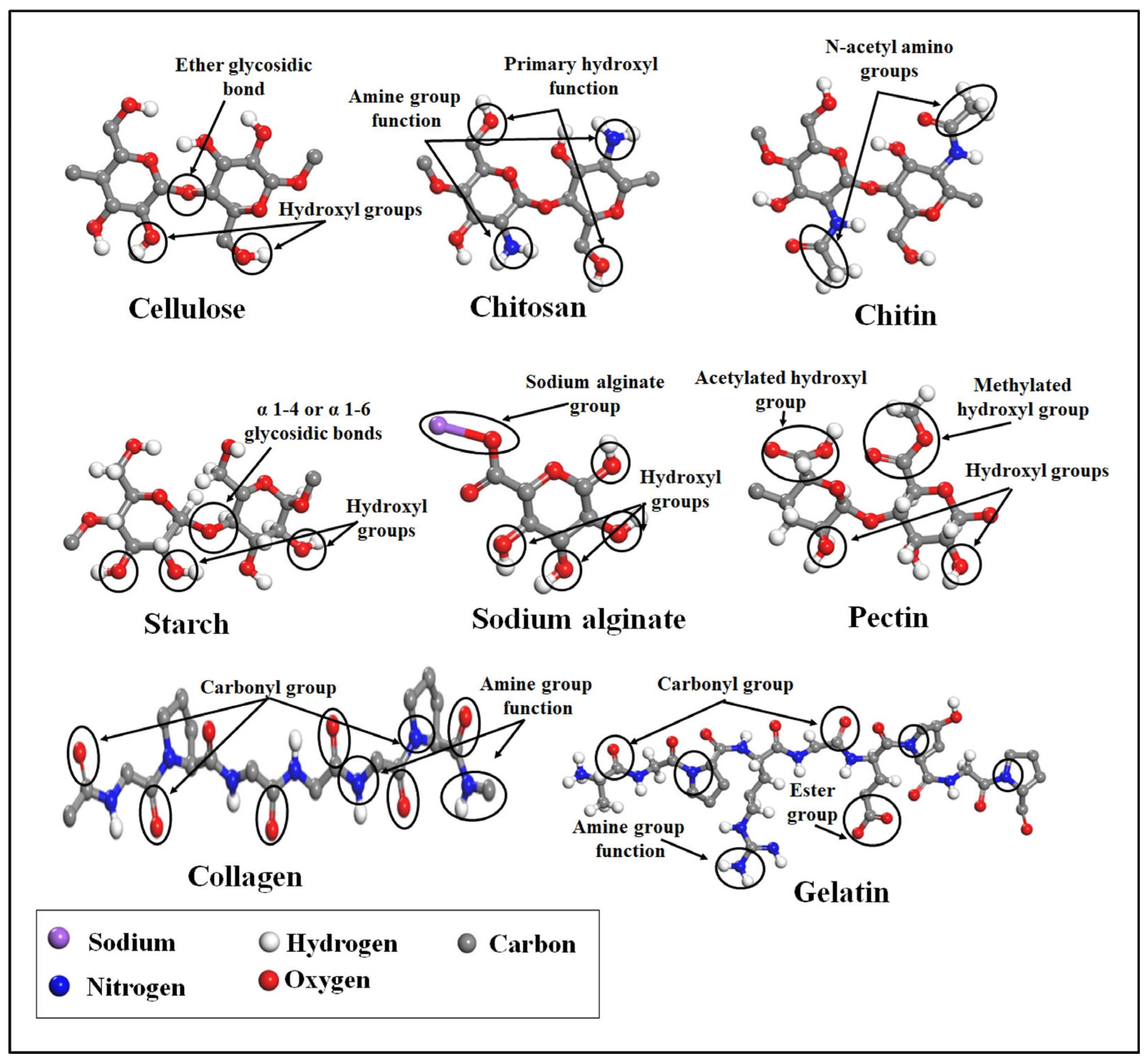



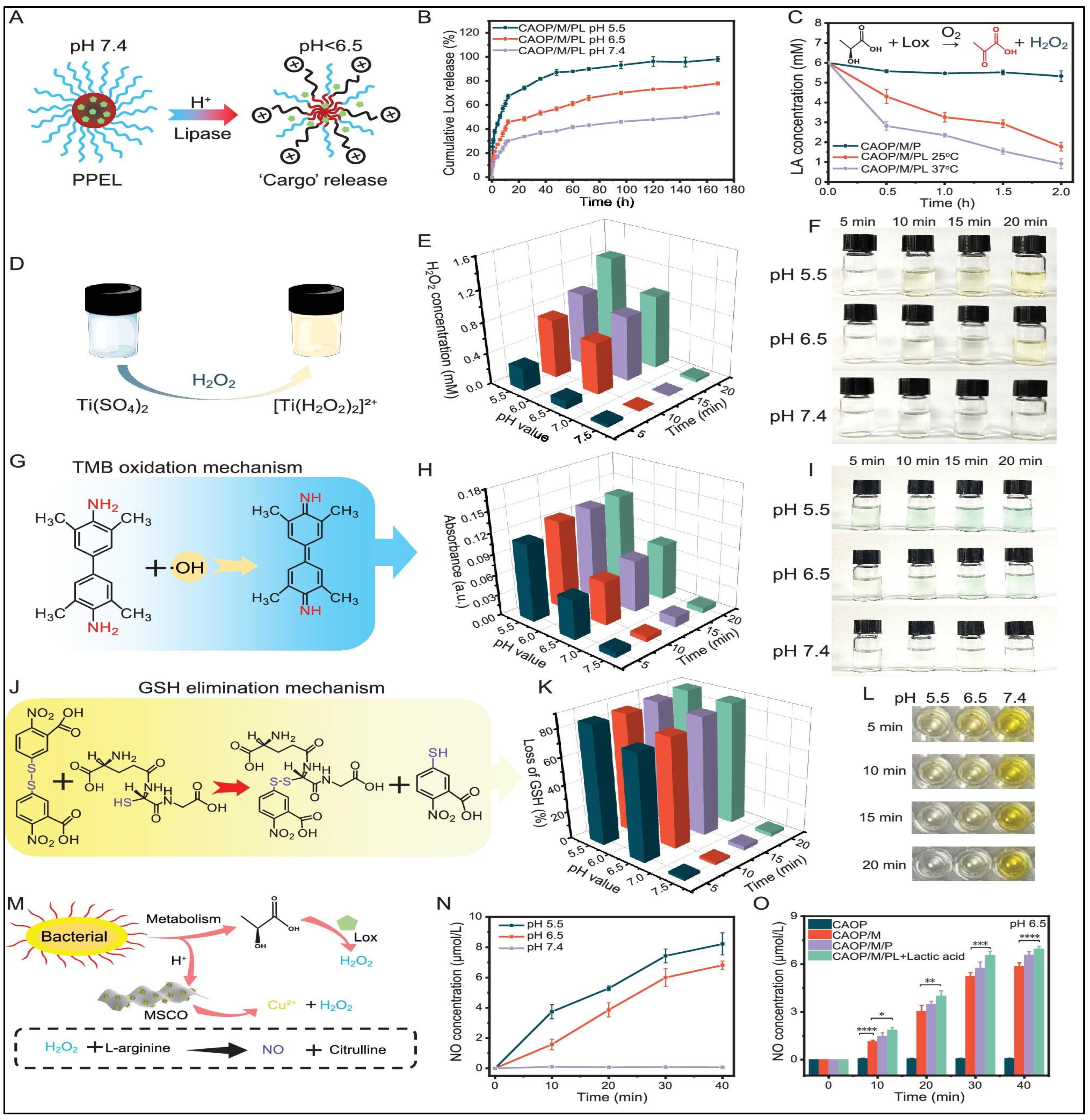
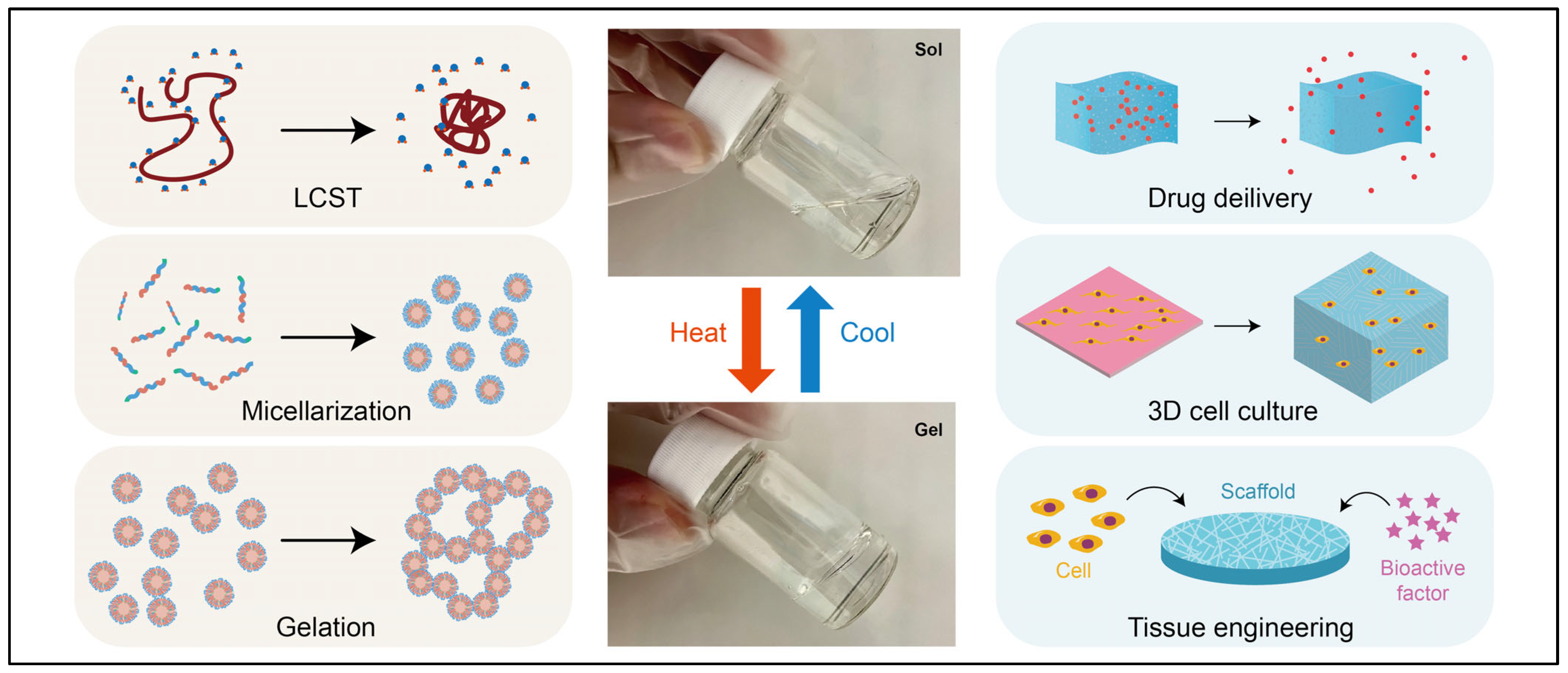
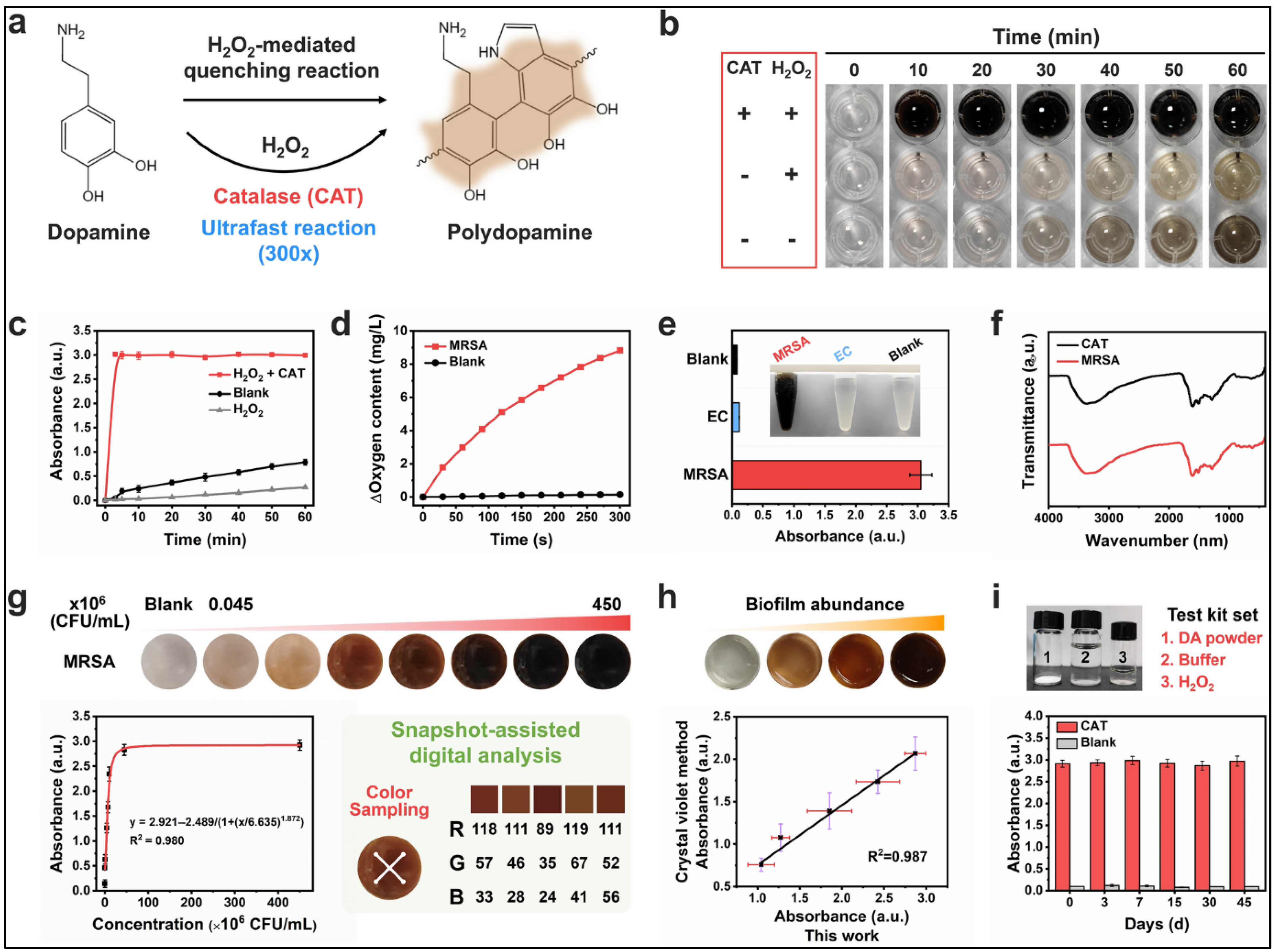
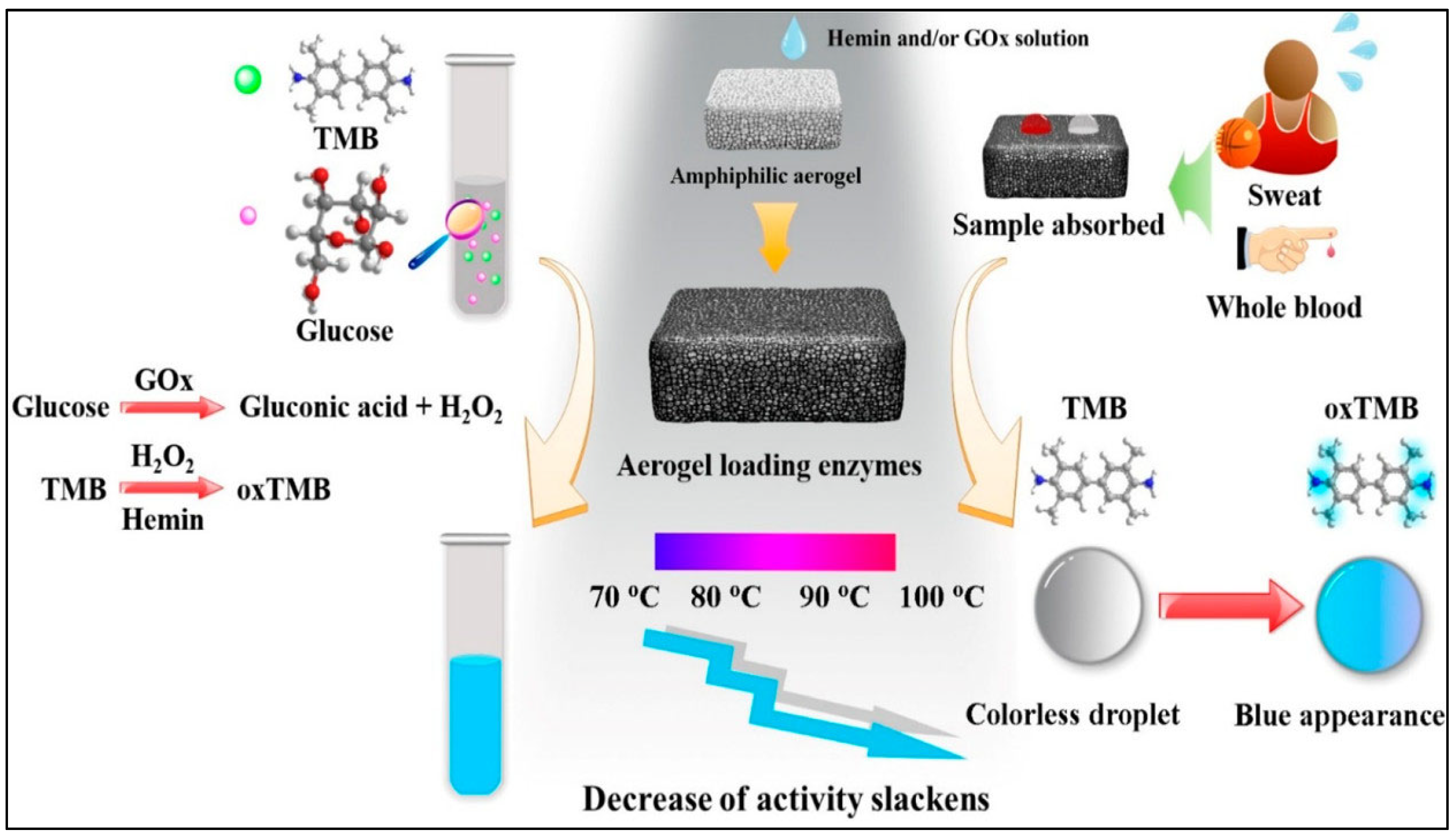

| Precursor Material/s | Form of Material | Preparation | Type of Cells | Remark | References |
|---|---|---|---|---|---|
| Silk fibroin and chitosan | Aerogel scaffolds | Lyophilization | MC3T3-E1 cells | Promotes osteogenic differentiation in the cells | [33] |
| Methylcellulose and bacterial nanocellulose | Aerogel | 3D printing | NIH/3T3 fibroblast cells | Biocompatibility and no sign of toxicity | [34] |
| Gelatin and silica | Hybrid aerogels | Supercritical drying | Osteoblasts cells | Positive effect on cell growth | [35] |
| Starch and chitosan | Composite aerogels | Solvent exchange | Intestinal Caco-2 | No sign of toxicity | [36] |
| Collagen | Aerogels | Lyophilization | Mouse fibroblast | Consistent pattern of elongation and proliferation | [37] |
| Nanocellulose and chitosan | Bioaerogel | Freeze drying | L929 fibroblast cell | Enhanced the proliferation of the cells | [38] |
| Silica, silk, and chitosan | Hybrid aerogels | 3D printing | L929 fibroblast cell | Confirmed the aerogel’s full biocompatibility with the cells | [39] |
| Nanofibrillated cellulose/glucosamine | Aerogel implant | 3D printing | MG-63 cells | Significant increase in MG-63 proliferation | [40] |
Disclaimer/Publisher’s Note: The statements, opinions and data contained in all publications are solely those of the individual author(s) and contributor(s) and not of MDPI and/or the editor(s). MDPI and/or the editor(s) disclaim responsibility for any injury to people or property resulting from any ideas, methods, instructions or products referred to in the content. |
© 2025 by the authors. Licensee MDPI, Basel, Switzerland. This article is an open access article distributed under the terms and conditions of the Creative Commons Attribution (CC BY) license (https://creativecommons.org/licenses/by/4.0/).
Share and Cite
Abdulsamad, M.A.; Essa, L.A.; Alghazeer, R.; Alkhayyal, N.; Altalhi, R.; Alghamdi, R.; Yahya, E.B. Recent Advances in Multimodal Nanostructured Bioaerogels for Smart Drug Delivery. Polymers 2025, 17, 3012. https://doi.org/10.3390/polym17223012
Abdulsamad MA, Essa LA, Alghazeer R, Alkhayyal N, Altalhi R, Alghamdi R, Yahya EB. Recent Advances in Multimodal Nanostructured Bioaerogels for Smart Drug Delivery. Polymers. 2025; 17(22):3012. https://doi.org/10.3390/polym17223012
Chicago/Turabian StyleAbdulsamad, Muhanad A., Lujin A. Essa, Rabia Alghazeer, Norah Alkhayyal, Rawan Altalhi, Randah Alghamdi, and Esam Bashir Yahya. 2025. "Recent Advances in Multimodal Nanostructured Bioaerogels for Smart Drug Delivery" Polymers 17, no. 22: 3012. https://doi.org/10.3390/polym17223012
APA StyleAbdulsamad, M. A., Essa, L. A., Alghazeer, R., Alkhayyal, N., Altalhi, R., Alghamdi, R., & Yahya, E. B. (2025). Recent Advances in Multimodal Nanostructured Bioaerogels for Smart Drug Delivery. Polymers, 17(22), 3012. https://doi.org/10.3390/polym17223012







